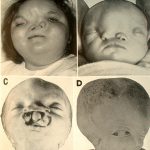According to Franz Kafka, “Man cannot live without a continuous confidence in something indestructible within himself” . The desire for immortality is a central drive of the human race.
Juan Ponce de León, who traveled on Columbus’s second voyage, searched Florida in 1513, hoping to find the fountain of youth.
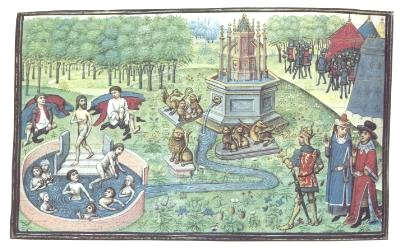
The myth is still active 400 years later and in Florida maybe more than anywhere else.
There are numerous attempts made by science to slow the process of aging and it is still a common belief that the fountain of youth maybe find someday. Avoiding the looming shadow of death has been the popular pursuit for many medical researchers.
How to prolong human existence? How to extend the boundaries of an ordinary lifespan? Gabrielle Boulianne of the University of Toronto discovered that fly life spans could be increased up to 40 percent by inserting a gene in motor neurons to make them produce more superoxide dismutase. This enzyme prevents the alteration of excess oxygen in cells into harmful substances, a sort of “cellular rusting.”.
Pycnogeno is supposed to drastically counter aging by eradicating those pesky free radicals which are harmful to cells, a free radical being an organic compound in which some of the valence electrons are unpaired, occurring as a normal byproduct of oxidation reactions in metabolism. DHEA, Conenzyme Q10 and many more promess to stop the death clock. Cryonics is another modern way to gain an extra life in the future against the loss of the current one.
Organ transplantation is limited until we design artificial organs as there are always more people in need of organs than there are donors. People’s religious beliefs may stop them from donating organs. Even if this is not the case, families may find the prospect of having their deceased loved ones, to put it crudely, chopped up, rather shocking.
Increasingly, we hear the Greek Tithonius myth applied to the contemporary aging story. In this immortality parable, a beautiful young man asked Aurora, the goddess of morning, to make him immortal. She does. He ages continuously. Finally, pitying his never-ending dissolution, she makes him into a grasshopper.
Instead of making the oldest of the old into grasshoppers, Society and medicine have produced a population of disabled including the million or more nursing home residents so disabled that twenty-four hour care is required, and the ten thousand individuals existing in irreversible vegetative states. National estimates reveal approximately one- quarter of the aged to be in need of some type of long-term care. The American Hospital Association estimated in 1991 that some 70 percent of all deaths are somehow negotiated or timed.
Death is indispensable to nature and evolution. Without death there would be no emergence of new individuals with genes better adapted to the changing environment. Without death there would be no room for new species to emerge.
Without death there would be no mating, no birth, no parenting, no family warmth. Death is the price we pay for the enjoyment of love between man and woman, love between parent and child. Even if medical technology allowed us to abolish death tomorrow, the world would become impossibly overpopulated, not to mention that people might start getting bored.
Undesirable immortality
“The rich man also died, and was buried; And in hell he lift up his eyes, being in torments, and seeth Abraham afar off, and Lazarus in his bosom. And he cried and said, Father Abraham, have mercy on me, and send Lazarus, that he may dip the tip of his finger in water, and cool my tongue; for I am tormented in this flame. But Abraham said, Son, remember that thou in thy lifetime receivedst thy good things, and likewise Lazarus evil things: but now he is comforted, and thou art tormented. And beside all this, between us and you there is a great gulf fixed: so that they which would pass from hence to you cannot; neither can they pass to us, that would come from thence.”- (Luke 16:22-26 King James Bible Translation)
“Those who are wretched shall be in the Fire: There will be for them therein (nothing but) the heaving of sighs and sobs: They will dwell therein for all the time that the heavens and the earth endure, except as thy Lord willeth: for thy Lord is the (sure) accomplisher of what He planneth. And those who are blessed shall be in the Garden: They will dwell therein for all the time that the heavens and the earth endure, except as thy Lord willeth: a gift without break.” – (The Qur’an, 11:106-108)
Instances from other religions could be added, especially from Buddhism, which considers the eternal rebirth to human life an essentially undesirable condition, to be overcome (though with a goal of attaining a higher level, not the ceasing of existence).
Mere perpetual existence is obviously not enough. Ultimately, one desires that this existence be of a desirable quality. As the prevalence of suicide suggests, people would often prefer not to exist at all, than exist in a severely unpleasant environment.
Symbols of immortality

Most symbolic representations of infinity or the life cycle are often used to represent immortality depending on the context they are placed in.
- Ankh : this Egyptian symbol of life holds connotations of immortality when depicted in the hands of the gods and pharaohs.
- The Möbius band in the shape of a trefoil knot is another symbol of immortality.
- The Ouroboros
- The Chinese Fungus of Longevity
- The Ten Kanji
- The Phoenix.
Spiritual immortality
Spiritual immortality is a belief that is expressed in nearly every religious tradition. In both Western and Eastern religions, the spirit is an energy or force that transcends the mortal shell, and returns to either the heavens or the cycle of life, directly or indirectly depending on the tradition.
Below we consider the perspective some of the world’s most popular religions on spiritual immortality.
Buddhists believe that a person goes through a cycle of birth, death, and rebirth. However, in Buddhism there is no belief in an eternal soul, but rather a collection of habits, desires, and memories. After death a person is reborn either as a human or in some other form, depending on the fruition of karma.
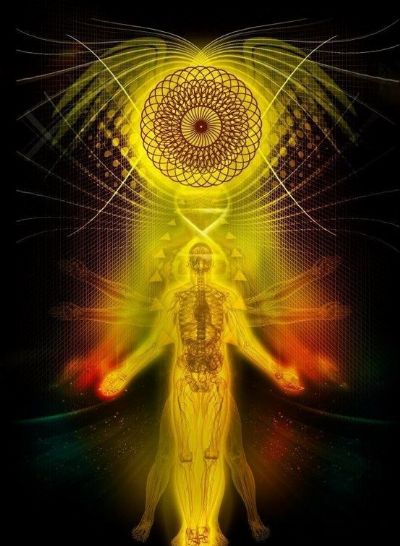
Christians believe that every person will be resurrected bodily: some to live forever in the presence of God, and some to never-ending consciousness of guilt, separation from God, and punishment for sin. Eternal damnation is depicted in the Bible as a realm of constant physical and spiritual anguish in a lake of fire, and a realm of darkness away from God. Some suggest that the fires of Hell are a theological metaphor, standing for the inescapable presence of God endured in absence of love for God.
Catholic theology also teaches that there is a realm called Purgatory where souls who have accepted Jesus are purged of their sins before they are admitted into Heaven. Some Christian sects also believe in a third realm called Limbo (Latin: border), which is the final destination of souls who have not been baptized, but who have been innocent of mortal sin. Souls in Limbo include unbaptized infants and those who lived virtuously but were never exposed to Christianity in their lifetimes. In Genesis, it is explained that humans were immortal before Adam and Eve ate from the Tree of Knowledge. Human’s loss of immortality is thought to be due to the unbalancing of the powers between the Tree of Knowledge and the Tree of Life.
Hinduism believes in an immortal soul which is reincarnated after death. According to Hinduism, people repeat a cycle of life, death, and rebirth (a cycle called samsara). If they live their life well, their Karma increases and their station in the next life will be higher, and conversely lower if they live their life poorly. Eventually after many life times of perfecting one’s karma, the soul is freed from the cycle and lives in perpetual bliss. There is no never-ending Hell in Hinduism, although if a soul consistently lives very evil lives, they could work their way down to the very bottom of the cycle.
Islam believes that everyone has an immortal soul that will live on in either Paradise or Hell depending on how one lives their life. Like Christianity and Judaism, there are no second chances following death in Islam. On judgment day one’s place of existence for all eternity is decided.
Judaism claims that the righteous dead will be resurrected in the “messianic age” with the coming of the messiah. They will then be granted immortality in a perfect world. The wicked dead, on the other hand, will not be resurrected at all. This is in contrast to Christianity where the wicked dead are still immortal and exist forever in Hell. This is not the only Jewish belief about the afterlife. Others do believe in some version of Hell. The Torah is not specific about the afterlife, so there are wide differences in views and explanations among believers.
Shinto claims that except for those who choose or are dispatched to the underground world of Yomi, every living and non-living beings may lose their body but not their Tamashii (soul) and they live together with mortal souls as an immortal being called Kami. Unlike the previously mentioned religions, Shinto allows anything to attain Kami status regardless of its existence before becoming Kami. Therefore, even those that do not believe in Shinto may choose to become Kami, as well as things like a rock, a tree, or even a robot. Some may be reincarnated for various reasons. Shinto has no version of Hell or a judgment day.
Physical immortality
Technological immortality is the name given to the prospect for much longer life spans made possible by scientific advances in a variety of fields: nanotechnology, emergency room procedures, genetics, human physiology, engineering, regenerative medicine, microbiology, and others.
Contemporary life spans in the advanced industrial societies are already markedly longer than those of the past because of better nutrition, availability of health care, standard of living and bio-medical scientific advances. Technological immortality predicts further progress for the same reasons over the near term. An important aspect of current scientific thinking about immortality is that some combination of human cloning, cryonics or nanotechnology will play an essential role in extreme life extension.

For example, Robert Freitas, a leading medical nano robotics theorist, suggests we may be able to create tiny medical nano robots that could go through our bloodstreams, find dangerous things like cancer cells and bacteria, and kill them). Freitas anticipates that gene-therapies and nanotechnology will eventually make the human body effectively self-sustainable and capable of living indefinitely , short of severe trauma. Some suggest we will be able to continually create biological or synthetic replacement parts to replace damaged or dying ones.
Some people believe that such treatments will not be available in their natural lifespan. Cryonics is the practice of preserving organisms (either intact specimens or only their brains) for possible future revival by storing them at cryogenic temperatures where metabolism and decay are almost completely stopped. Ideally this would allow clinically dead people to be brought back in the future after cures to the patients’ diseases have been discovered and aging is reversible. Modern Cryonics procedures use a process called vitrification which creates a glass like state rather than freezing as the body is brought to low temperatures. This process reduces the risk of ice crystals damaging the brain structure. Many people who wish to become physically immortal think of cryonics as a backup plan in case the emerging life extension technologies don’t develop rapidly enough.
Some believe that biological forms have inherent limitations in their design–primarily, their fragility and inability to immediately morph to fit the environment. A way around that predicament may someday present itself in the ability to “exist” outside of the biological form. Over the long term, the biological nature of humanity may only be temporary; should technology permit, people may circumvent death and evolution, simply by taking artificial forms. One interesting possibility involves uploading the personality and memories via direct mind-computer interface.
Some futurists propose that, thanks to exponentially growing computing power, it will someday be possible to upload human consciousness onto a computer system, and live indefinitely in a virtual environment. This could be accomplished via advanced cybernetics, where computer hardware would initially be installed in the brain to help sort memory or accelerate thought processes. Gradually more and more components would be added until the person’s entire brain functions were handled by artificial devices, without any sharp transitions that would lead to some identity issues mentioned below. At this point, the human body would become only an accessory and the mind could be transferred to any sufficiently powerful computer. A person in this state would then be essentially immortal, short of cataclysmic destruction of the entire civilization and their computers. However, some argue that although the computer consciousness would be an exact copy of the original (and thus undetectable to others), the original mind would no longer exist.
Quantum immortality is the name for the speculation that the Everett many-worlds interpretation of quantum mechanics implies that a conscious being cannot cease to be. The idea is highly controversial. Theoretically given any potentially fatal event that could happen to, say, a quantum physicist, there will be possible universes in which the physicist indeed dies and other possible universes where the physicist somehow survives. As time goes on the physicist is dead in more and more of all possible universes due to random accidents and aging, however because there are infinite possibilities, there will always be at least one universe in which the physicist miraculously lives another day. The idea behind quantum immortality is that the physicist would only be able to experience the universes in which he survives, even though they may be an increasingly small subset of the possible universes. In this way, the physicist would appear from his own standpoint to be living forever. Some of the potential ultimate fates of the Universe could present an eventual death with no means of avoidance no matter how unlikely, but even then in an infinite universe there could be some means of working around such a limit.
Long before modern science made such speculation feasible, people wishing to escape death sought what we might term mystical immortality, turning to the supernatural world for answers. Examples include the medieval alchemists and their search for the Philosopher’s Stone, or more modern religious mystics such as Sri Aurobindo, who believed in the possibility of achieving physical immortality through spiritual transformation.
Rastafarians believe in physical immortality as a part of their religious doctrines. They believe that after their God has called the day of judgement they will go to what they describe as Mount Zion in Africa to live in freedom for ever. Instead of having everlasting life, which implies an end in the word last, the rastas look forward to having everliving life. Another group that believe in physical immortality are the Rebirthers, who believe that by following the connected breathing process of rebirthing they will live forever physically.
Some people believe physical immortality would not be possible or even desirable. Jacques-Yves Cousteau, in the preface to his book The Ocean World, expressed his meditations on physical immortality, as a part of life and its adaptive processes: ‘Death,’ Cousteau states, ‘is fundamental to evolution;’ and ‘evolution is fundamental to survival’. He concludes that, biologically speaking, ‘immortality does not present a possible means to avoid death’: “Mortal or immortal, [an organism] must die.” Michael Shermer believes there is no significant scientific evidence for the proposed methods of achieving physical immortality. He says about them, “All have some basis in science, but none has achieved anything like scientific confirmation.”
In Hinduism, one feat that advanced Yogis (practitioners of Yoga) can supposidly perform is “body jumping” – the ability to jump into another host and therefore live a longer life. Many Indian fables and tales include instances of this, and some believers treat the frequent recurrence of this idea as evidence that such an “immortality” method cannot be dismissed outright. There are also entire Hindu sects devoted to the attainment of physical immortality by various methods, namely the Naths and the Aghoras.
The Avatar Project
In February 2011 Russian entrepreneur, Dmitry Itskov, created the organization with the aim
“to create technologies enabling the transfer of an individual’s personality to a more advanced non-biological carrier, and extending life, including to the point of immortality.”
With support of specialist in neural interfaces, robotics, artificial organs and systems the organization expects to achieve this by the year 2045.
The Avatar Project is one of its featured projects and has 4 phases. Ultimately, by combining an advanced brain-computer interface with an artificial humanoid body called an avatar, they expect to achieve immortality.
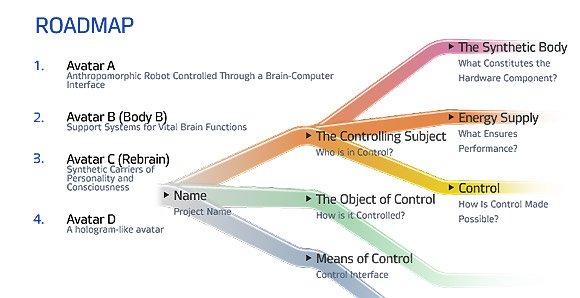
Phase 1 – Avatar A
A robotic body capable of interpreting commands remotely from a brain-computer interface. It will be able to transfer information back through the interface to the host.
Estimated deadline by 2020.
Phase 2 – Avatar B
A robotic body housing a transplanted human brain. The system will have self contained life support and allow the brain to interact with the environment.
Estimated deadline 2025.
Phase 3 – Avatar C
A robotic body with an artificial brain. A human consciousness is uploaded to the avatar at the end of the individuals life.
Estimated to happen around 2035.
Phase 4 – Avatar D
A holographic body with a transferred human consciousness. Unobtainable with current technologies and understanding of physics.
Estimated to happen around 2045.
for more information head on to http://2045.com/
The paradox of an unending existence
As a thought experiment, suppose that clinical immortality were possible, in which through advanced life support machinery or similar, the bodily functions of a comatose human could be kept running in perpetuity. Is it good news to keep a vegetative human’s heart pumping for aeons? According to the vast majority of ethicists, “Not at all,” since unending biological functioning is not what is at issue in immortality. Ultimately, what one desires is some sort of permanent preservation of personal identity, not just unceasing metabolic integrity.

This brings up the philosophical issue of the meaning of consciousness. As another thought experiment, suppose a surgeon replaces part of a man’s brain with a pacemaker (this is actually done to treat Parkinson’s). After this procedure is done, the patient comes out of his anesthesia feeling like the same person. For the intentions of this experiment, suppose that doctors already fully understand the brain and are able to successfully move sections of the brain’s neural network and memories onto hardware where they can perfectly emulate the “architecture” of the brain. Over a period of time, suppose that the individual has many more operations with the intent of gradually replacing parts of his brain with computer hardware. Eventually, the man has a brain made entirely out of computer parts. The man comes out claiming that he is the same person as before. He has the same memories and acts the same.
Now suppose that instead of replacing parts of his brain with hardware, he copies the entire brain onto hardware. The computerized version of this man’s brain acts the same way, and claims that it is the same man who underwent the procedure. The original man is still alive, however. Are the machine and the man the same person? Are they somehow linked in consciousness? These are the types of situations that illustrate the lack of knowledge concerning the meaning of consciousness that we as a civilization currently possess.
Rejuvenation
Historical and Cultural Background
Various myths tell the stories about the quest for rejuvenation. It was believed that magic or intervention of a supernatural power can bring back the youth and many mythical adventurers set out on a journey to do that, for themselves, their relatives or some authority that sent them.
In some religions people were to be rejuvenated after death prior to placing them in heaven.
The stories continued well into the 16th century. A famous Spanish explorer Juan Ponce de León led the expedition around the Caribbean islands and into Florida to find the Fountain of Youth. Led by the rumours, the expedition continued the search and many perished. The Fountain was nowhere to be found as locals were unaware of its exact location.
Since the emergence of philosophy, sages and self-proclaimed wizards always made enormous efforts to find the secret of youth, both for themselves and for their noble patrons and sponsors. It was widely believed that some potions may restore the youth.
Another commonly cited approach was attempting to transfer the essence of youth from young people to old. Some examples of this approach were sleeping with virgins or children (sometimes literally sleeping, not necessarily having sex), drinking their blood.
The quest for rejuvenation reached its height with Alchemy. All around the Europe and also beyond alchemists were looking for the Philosopher’s Stone, the mythical substance that, as it was believed, could not only turn lead into gold, but also prolong life and restore youth. Although the set goal was not achieved, Alchemy paved the way to the scientific method and so to the medical advances of today.
Modern developments
According to modern science, there are no natural laws preventing successful rejuvenation. Aging is an accumulation of damage to macromolecules, cells, tissues and organs. If any of that damage can be repaired, the result is rejuvenation.
There have been many experiments which have been shown to increase the maximum life span of laboratory animals, thereby achieving life extension. A few experimental methods have had limited success in partially rejuvenating laboratory animals and humans, such as replacing hormones to youthful levels.
Most attempts at genetic repair have traditionally involved the use of a retrovirus to insert a new gene into a random position on a chromosome. But by attaching zinc fingers (which determine where transcription factors bind) to endonucleases (which break DNA strands) homologous recombination can be induced to correct and replace defective (or undesired) DNA sequences. The first applications of this technology are to isolate stem cells from the bone marrow of patients having blood disease mutations, to correct those mutations in laboratory dishes using zinc finger endonucleases and to transplant the stem cells back into the patients (SCIENCE; 310:1894-1896 (2005)).
Regenerative medicine uses three different strategies: (1) implantation of stem cells from culture into an existing tissue structure (2) implantation of stem cells into a tissue scaffold that guides restoration or (3) induction of residual cells of a tissue structure to regenerate the necessary body part. A salamander can not only regenerate a limb, but can regenerate the lens or retina of an eye and can regenerate an intestine. For regeneration the salamander tissues form a blastema by de-differentiation of mesenchymal cells, and the blastema functions as a self-organizing system to regenerate the limb (SCIENCE; 310:1919-1923 (2005)).
Yet another option involves cosmetic changes to the individual to create the appearance of youth. These are generally superficial and do little to make the person healthier or live longer, but the lack of depressing over their appearance may elevate their mood, and have positive side effects normally correlated with happiness. Cosmetic surgery is a large industry offering treatments such as removal of wrinkles (“face lift”), removal of extra fat (liposuction) and reshaping or augmentation of various body parts (abdomen, breasts, face). There are also, as always in history, many fake rejuvenation products that do not work.
Cryonics
Cryonics (often mistakenly called “cryogenics”) which began in the Fifties, is the freezing – usually in liquid nitrogen – of human beings who have been legally declared dead. The aim of this process is to keep such individuals in a state of refrigerated limbo so that it may become possible in the future to resuscitate them, cure them of the condition that killed them, and then restore them to functioning life in an era when medical science has triumphed over the activities of the Banana Reaper
Cryonicists do not believe that legal death is real death (irreversible destruction of the anatomical basis of mind) any more than conventional medicine now accepts that cessation of heartbeat is “real death”, when the heart can be restarted with a defibrillator.
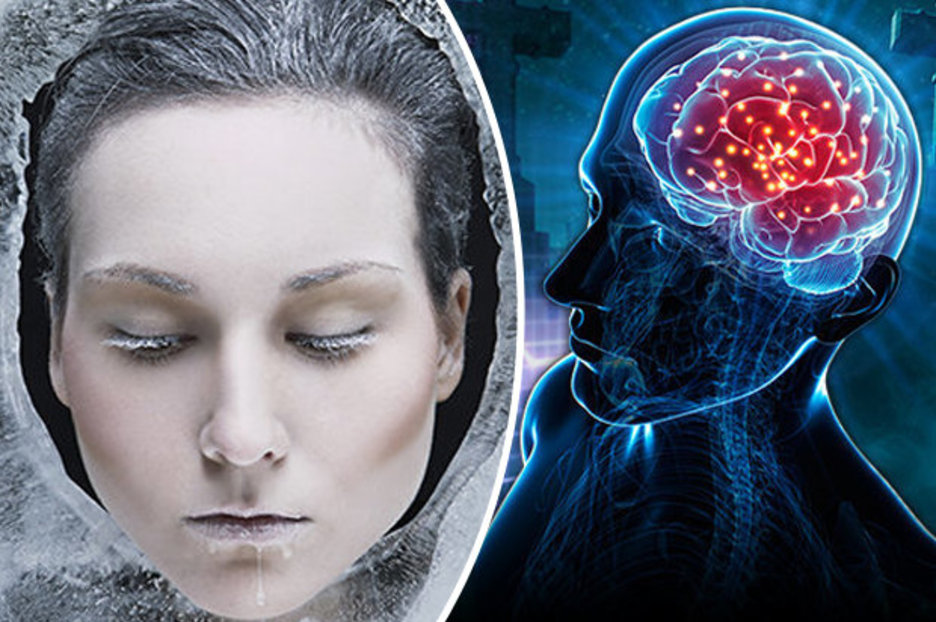
The basis of cryonics is that at cryogenic temperatures there will be no alteration in biological tissue for thousands of years, which allows plenty of time for future medicine to achieve the required capabilities. The process is not currently reversible, and by law can only be performed on humans after legal death. Cryonics is viewed with skepticism by most scientists and doctors today. However, there is a high representation of scientists among cryonics supporters.
Scientific support for cryonics is based on projections of future technology, especially molecular nanotechnology and nanomedicine. Some scientists believe that future medicine will enable molecular-level repair and regeneration of damaged tissues and organs decades or centuries in the future. Disease and aging are also assumed to be reversible.
The process
Cryonics is not freezing of humans or pets. Ice is very damaging to body tissues, so all cryonics organizations use cryoprotectants to prevent ice formation, ie, anti-freeze substances that can reduce or prevent ice formation. Formerly cryonics organizations used glycerol as their cryoprotectant, which resulted in about 80% ice elimination (vitrification) and about 20% freezing. Cryonicists believed that damage that was being caused by disease, by aging and by the freezing would someday be repaired by nanotechnology. With vitrification the burden on future technology has been greatly reduced. With cells and tissues mainly preserved by cooling, future technology should be able to repair damage resulting if the cooling process is not too delayed.
Since the 1990s vitrification solutions have been developed that have virtually eliminated ice formation (reduced to less than 0.2%). In fact, it was announced in July 2005 that one such solution had been used to vitify rabbit kidney at -135°C, and was later transplanted into a rabbit with full viability.
Stoppage of heartbeat and breathing, the usual criteria for legal death, do not correspond to the death of cells and tissues of the body. The cells and tissues are still very much alive when death is pronounced. Even at room temperature cells and tissues take hours to die, and days to decompose. Although neurological damage is the usual consequence of cessation of heartbeat for more than 4-6 minutes, the irreversible neurodegenerative processes do not manifest for hours.
Cryonics rescue procedures cannot begin until legal pronouncement of death has occurred, and pronouncement is usually based on cessation of heartbeat (only very rarely on brain activity measurements). When the heart stops beating and blood flow ceases, ischemic damage begins. Deprived of oxygen and nutrient, cells, tissues and organs begin to deteriorate. If the heart is restarted after too many minutes have passed, the reintroduced oxygen can cause even more damage due to oxidative stress, a phenomenon known as reperfusion injury. Cryonicists try to minimize ischemic and reperfusion injury by beginning cardio-pulmonary support (much like CPR) and cooling as soon as possible after pronouncement of death. Anti-clotting agents like heparin and antioxidants may be administered. Suspended Animation, Inc is a Florida company that specializes in research into, and implementation of, optimal procedures for minimizing ischemic injury in cryonics rescue. People, especially children, have survived up to an hour without heartbeat after having fallen into ice water.
The central premise of cryonics is that memory, personality, and identity are stored in the structure and chemistry of the brain. While this view is widely accepted in medicine, and brain activity is known to stop and later resume under certain conditions, it is not generally accepted that current methods preserve the brain well enough to permit revival in the future. Cryonics advocates point to studies showing that high concentrations of cryoprotectant circulated through the brain before cooling can mostly prevent freezing injury, preserving the fine cell structures of the brain in which memory and identity presumably reside.
To its detractors, the justification for the actual practice of cryonics is unclear, given present limitations of preservation technology. Currently cells, tissues, blood vessels, and some small animal organs can be reversibly cryopreserved. Some frogs can survive for a few months in a partially frozen state a few degrees below freezing, but this is not true cryopreservation. Cryonics advocates counter that demonstrably reversible preservation is not necessary to achieve the present-day goal of cryonics, which is preservation of basic brain information that encodes memory and personal identity. Preservation of this information is said to be sufficient to prevent information theoretic death until future repairs are possible.
During the 1980s, the problems associated with crystallization were becoming better appreciated, but the publication of the book Engines of Creation by K. Eric Drexler in 1986 aroused a great deal of interest in the idea that nanotechnology would be able to repair freezing damage. Alcor and the American Cryonics Society shifted emphasis from whole body to “neuropreservation” (“neuro”, head-only cryopreservation), on the assumption that the rest of the body could be regrown, perhaps by cloning of the person’s DNA or reconstructed with nanotechnology.
The main goal now seems to be to preserve the information contained in the structure of the brain, on which memory and personal identity depends. Available scientific and medical evidence suggests that the mechanical structure of the brain is wholly responsible for personal identity and memories (for instance, spinal cord injury victims, organ transplant patients, and amputees appear to retain their personal identity and memories).
Damage caused by freezing and fracturing is thought to be potentially repairable in the future, using nanotechnology, which will enable the manipulation of matter at the molecular level. To critics, this appears a kind of futuristic deus ex machina, but while the engineering details remain speculative, the rapidity of scientific advances over the past century, and more recently in the field of nanotechnology itself, suggest to some that there may be no insurmountable problems. And the cryopreserved patient can wait a long time. With the advent of vitrification, the importance of nanotechnology to the cryonics movement may begin to decrease.
Some critics, and even some cryonicists, question this emphasis on the brain, arguing that during neuropreservation some information about the body’s phenotype will be lost and the new body may feel “unwanted,” and that in case of brain damage the body may serve as a crude backup, helping restore indirectly some of the memories. The argument is also made that the body is personal memorabilia of life-history, much like diaries and photo albums. Partly for this reason (as well as for better public relations), the Cryonics Institute preserves only whole bodies. Some proponents of neuropreservation agree with these concerns, but still feel that lower costs and better brain preservation justify preserving only the brain. About three-quarters of the patients stored at Alcor are “neuros”.
Financial issues
The biggest drawback to current vitrification practice is a cost issue. Because the most cost-effective means of storing a cryopreserved person is in liquid nitrogen, fracturing of the brain occurs, a result of thermal stresses that develop when cooling from −130°C to −196°C (the temperature of liquid nitrogen). Fracture-free vitrification would require inexpensive storage at a temperature significantly below the glass transition temperature of about −125°C, but high enough to avoid fracturing (−130°C is about right). Alcor is currently developing such a storage system. Alcor believes, however, that even before such a storage system is developed, the current vitrification method is far superior to traditional glycerol-based freezing. The fractures are very clean breaks that occur even with traditional glycerol cryoprotection, and the loss of neurological structure is much less than that caused by ice formation, by orders of magnitude.
Cryopreservation arrangements can be expensive, currently ranging from $28,000 at the Cryonics Institute to $150,000 at Alcor and the American Cryonics Society. Most cryonicists fund the costs by making cryonics organizations the beneficiaries of life insurance policies. The elderly, and others who may be uninsurable for health reasons, will often pay for the procedure through their estate. Others simply invest their money over a period of years, accepting the risk that they might die in the meantime. All in all, cryonics is actually quite affordable for the vast majority of those in the industrialized world who really want it, especially if they make arrangements while still young.
Even assuming perfect cryopreservation techniques, many cryonicists would still regard eventual revival as a long shot. In addition to the many technical hurdles that remain, the likelihood of obtaining a good cryopreservation is not very high because of logistical problems. The likelihood of the continuity of cryonics organizations as businesses, and the threat of legislative interference in the practice, don’t help the odds either. Most cryonicists, therefore, regard their cryopreservation arrangements as a kind of medical insurance—not certain to keep them alive, but better than no chance at all and still a rational gamble to take.
Philosophy and Ethics
Cryonics is based on a view of dying as a process that can be stopped in the minutes, and perhaps hours, following clinical death. If death is not an event that happens suddenly when the heart stops, this raises philosophical questions about what exactly death is. In 2005 an ethics debate in the medical journal, Critical Care, noted “…few if any patients pronounced dead by today’s physicians are in fact truly dead by any scientifically rigorous criteria.” Cryonics proponent Thomas Donaldson has argued that “death” based on cardiac arrest or resuscitation failure is a purely social construction used to justify terminating care of dying patients. In this view, legal death and its aftermath are a form of euthanasia. Philosopher Max More suggested a distinction between death associated with circumstances and intention versus death that is absolutely irreversible. Absolutely irreversible death has also been called information-theoretic death. Bioethicist James Hughes has written that increasing rights will accrue to cryonics patients as prospects for revival become clearer, noting that recovery of legally dead persons has precedent in the discovery of missing persons.
Ethical and theological opinions of cryonics tend to pivot on the issue of whether cryonics is regarded as interment or medicine. If cryonics is interment, then religious beliefs about death and afterlife come into consideration. Resuscitation is generally deemed impossible because the soul is gone, and only God can resurrect the dead. Expensive interment is seen as a waste of resources. If cryonics is regarded as medicine, with legal death as a mere enabling mechanism, then cryonics is a long-term coma with uncertain prognosis. It is continuing to care for sick people when others have given up, and a legitimate use of resources to sustain human life. Cryonics advocates complain that theological dismissal of cryonics because it is interment is a circular argument because calling cryonics interment presumes that cryonics cannot work. They believe future technical advances will validate their view that cryonics patients are recoverable, and therefore never really dead.
Alcor has published a vigorous Christian defense of cryonics, including excerpts of a sermon by Lutheran Reverend Kay Glaesner. Noted Christian apologist John Warwick Montgomery has defended cryonics. In 1969, a Roman Catholic priest consecrated the cryonics capsule of Ann DeBlasio, one of the first cryonics patients. In 2002, a Muslim cleric indicated in a media interview that cryonics would be compatible with Islam if it were medicine.
Reincarnation
Many systems of belief incorporate ideas about reincarnation. The popular view of reincarnation is that after a person dies, the spirit of that person is reborn in another body. The body is seen as a temporary dwelling, from which some spiritual essence escapes at death. The spirit or soul is then often described as undergoing some form of readjustment, reappraisal, perhaps including judgment. Aspects of the previous life, or lives will carry over into the next existence.
Some people believe that the spirit can be reborn into animal or even insect form, perhaps as a result of the person not having lived a good existence in their last life. Others believe that the soul can only be born into another person. In some religions, reincarnation is only a stage that the soul must undergo before attaining release from the endless circle of death and rebirth.
Psychic researchers link reincarnation with other paranormal phenomena such as astral projection, apparitions, near-death experiences, mediumship but such categories, if they support the concept to certain extent, are even more uncertain.
Testimonies
Many people claim to be able to recall events from their last lives, and a thriving business has developed to assist people to “rediscover” previous existences.
Some evidence for reincarnation comes from cases where individuals under hypnosis produce memories from what might be taken as a prior lifetime. These memories come through with a vividness of emotion and detail very much like early childhood memories. Often the reincarnation dramas seem to explain important characteristics in the subject’s psychological makeup. This type of testimony is very interesting from a psycho-dynamic point of view. However, it cannot constitute acceptable evidence for reincarnation until it is shown that the descriptions match actual life-histories which are unknown to the subject.
A large number of case reports have been published, but few of these cases were researched exhaustively. Most “hypnotic regressions to past lives” could then be explained in a more conventional way :
- Suggestion, role-playing, loss of inhibition
- Dissociation (including cryptomnesia), and desire to please the hypnotist.
- Postcognition.
- Spirit possession.
The Swiss psychiatrist, Carl Gustav Jung, expresses my own thoughts:
Rebirth is an affirmation that must be counted among the primordial affirmations of mankind. These primordial affirmations are based on what I call archetypes… There must be psychic events underlying these affirmations which it is the business of psychology to discuss — without entering into all the metaphysical and philosophical assumptions regarding their significance.
Some evidence for reincarnation comes from cases where individuals under hypnosis produce memories from what might be taken as a prior lifetime. These memories come through with a vividness of emotion and detail very much like early childhood memories. Often the reincarnation dramas seem to explain important characteristics in the subject’s psychological makeup. This type of testimony is very interesting from a psychodynamic point of view. However, it cannot constitute acceptable evidence for reincarnation until it is shown that the descriptions match actual life-histories which are unknown to the subject — even then it could be merely postcognition.
Hypnotic regressions to ostensible “past lives” are fascinating psychological events that have attracted attention in professional journals and in the popular press. A large number of case reports have been published, but few of these cases were researched exhaustively, few were based on extensive hypnotic interviews, and few authors reported negative as well as positive findings.
After careful review of available phenomena that had suggested the possibility of reincarnation, Stevenson, following the methodology of early psychic researchers (Gurney et al. in 1886 and Myers in 1903), devised a protocol for recovery and evaluation of memories of apparent previous lives, a process Stevenson described in 1977.
In the study of spontaneous paranormal phenomena we must usually interview and cross-question informants about events that have happened before we arrive on the scene. In principle, the methods are those that lawyers use in reconstructing a crime and historians use in understanding the past. Once we have the best account possible of the events in question, we consider one by one the alternative explanations and try to eliminate them until only the single most probable one remains. Then we try with further observations to confirm or reject the initially preferred explanation. In addition, we search through series of apparently similar phenomena for recurrent features that may provide clues to causative conditions and processes of occurrence.
This paradigm for investigation focused on spontaneous cases suggestive of reincarnation that were described in young children, two to four years old, who begins talking to the parents about another lifetime. Why young children? Because young children should be less likely to be exposed to information about life details of a dead individual who is reincarnated. Generally, the parents will dismiss such talk as nonsense — even in cultures where reincarnation is believed to occur. However, the child may persist and even insist upon visiting the community of his former residence. If the child supplies many details the parents may initiate an inquiry. Ideally at this stage, a scientific investigator is introduced to the scene. Careful records are made of all the child’s statements. Verification can then begin by visiting the indicated community. If a family exists meeting the child’s descriptions of his former household, the investigator can arrange for the two families to visit. Tests are then arranged to determine if the child can recognize places, objects, and people. Often it seems these memories are lost as the child grows older.
A brief description of a typical case of the reincarnation type would show the following features:
- Starting in years 2–4, the child spontaneously narrates details of a previous life. 2) Volume and clarity of statements from the child increase until ages 5–6, when the child talks less about them.
- By age 8, remarks about previous life generally cease. 4) Unexpected behavior unusual for child but concordant with behavior of deceased person occur, e.g., phobias for guns or special interests and appetites.
- In many cases the child has a birthmark or congenital deformity that corresponds in location and appearance to fatal wounds on the body of the previous personality. A high number of reincarnated personalities report violent death, which the child alludes to.
- In some cultures the individual who “reincarnates” predicts his or her next incarnation and may appear in a dream to the expectant mother of the child to announce an intention to reincarnate in the baby.
- After the age of 10 these child subjects usually develop normally.
Stevenson has discovered two important laws in reincarnation
- Reincarnation seems to happen everywhere and and there are strong similarities between cases found in Asia, Africa, and Northwest North American native tribe. Whatever the collection of behaviors and physical manifestations of reincarnation, there is a substantial element of invariance in their manifestation. Stevenson has followed this information-gathering protocol since the early days of his worldwide travels to investigate spontaneous cases suggestive of reincarnation, which have been published over the years as separate volumes covering different cultures.
- Further evidence of invariance is to discover that vastly different cultures appear to share with very similar behavioral and physical manifestations in these phenomena such as the apparent increase in death due to violence in those who reincarnate and the startling correspondence found between birth marks on the child and similar marks or distinguishing features present on the body of the reincarnated personality during their lifetime, such as wounds, injuries, and other stigmata.
Awaken children
Among thousands of reports that have been investigated so far, some very strange facts appear that cannot be discounted. As an example, the case of Swarnlata Mishra is instructive.
On March 2, 1948, Swarnlata was born the daughter of the district school inspector in Chhatarpur, Madya Pradesh, India. At the age of three and a half, while on a trip with her father passing through the town of Katni, she made a number of strange remarks about her house in this village. The Mishra family had never lived closer than 100 miles from this town. Later she described to friends and family further details of a previous life. Her family name, she claimed, had been Pathak. She also performed unusual dances and songs which she had had no opportunity to learn.
At the age of ten Swarnlata recognized a new family acquaintance, the wife of a college professor, as a friend in her former lifetime. Several months later, this case was brought to the attention of Sri H. N. Banerjee, of the Department of Parapsychology, University of Rajasthan, Jaipur. He interviewed the Mishra family; then, guided by Swarnlata’s statements, he located the house of the Pathak family in Katni. Banerjee found that Swarnlata’s statements seemed to fit the life history of Biya, a daughter of the Pathak family and deceased wife of Sri Chintamini Panday. She had died in 1939.
In the summer of 1959, the Pathak family and Biya’s married relatives visited the Mishra family in Chhatarpur. Swarnlata was able to recognize and identify them. She refused to identify strangers who had been brought along to confuse her. Later Swarnlata was taken to Katni and the neighboring towns. There she recognized additional people and places, commenting on changes which had been made since Biya’s death. Unfortunately Sri Banerjee was not present during these reunions.
It was not until the summer of 1961 that Dr. Ian Stevenson, an eminent psychiatrist and psychical researcher from the University of Virginia, visited the two families and attempted to verify the authenticity of the case.
Stevenson determined that of 49 statements made by Swarnlata only two were found to be incorrect. She accurately described the details of Biya’s house and neighborhood as they were before 1939. She described the details of Biya’s disease and death as well as the doctor who treated her. She was able to recall intimate incidents known only to a few individuals. For example, she knew Sri Ciantimini Pandey had taken 1200 ruples from a box in which Biya had kept money. He admitted this, when questioned, and stated no one but Biya could have known of the incident. She accurately identified former friends, relatives, and servants in spite of the efforts of the witnesses to deny her statements or mislead her. Most of the recognitions were given in a way which obliged Swarnlata to provide a name or state a relationship. It was not a case of asking, “Am I your son?” but rather, “Tell me who I am.”
Perhaps because of her family’s tolerance, Swarnlata’s impressions of Biya’s life have not faded. In fact, Swarnlata continues to visit Biya’s brothers and children and shows great affection for them. Remarkably she continues to act as an older sister to the Pathak brother–men forty years older than her. Furthermore, the Pathak family was rather westernized and did not believe in reincarnation before their encounter with Swarnlata.
Swarnlata also talked about another intermediate life as a child named Kamlesh in Sylket, Bengal, where she died at the age of nine. While this claim has not been verified in detail, many of her statements were found to correlate with the local geography. Her songs and dances were also verified as Bengali, although she had lived all her life only among Hindi speaking people.
If one rules out the possibility of fraud in such cases — and there are many which are as evidential as this one–one might assume a child like Swarnlata was recalling the memories of stories which she had overheard during her very early childhood or infancy. The other explanation — as with mediumship — involves ESP along with a remarkable skill for impersonation.
Xenoglossy
Perhaps the most extraordinary cases which challenge the super-ESP hypothesis are those which involve xenoglossy or the ability to speak a language one has never learned. The Bengali songs and dances which Swarnlata was able to recite offer a minor example of xenoglossy. Other cases are far more intriguing.
Dr. Ian Stevenson documents the case of a Russian-Jewish woman living in Philadelphia who, under hypnosis, claimed to be a Swedish peasant named Jensen Jacoby. Furthermore, she was able to carry on rather involved conversations in this state using a mixture of Swedish and Norwegian with proper grammar and inflectional intonations. Speaking in a gruff male voice, she vividly portrayed the personality of the illiterate peasant and was also able to accurately identify objects borrowed from the American Swedish historical museum in Philadelphia. Most of these hypnotic sessions were tape-recorded.
Stevenson spent over six years researching this case, interviewing witnesses and family members in order to determine if there was any possibility the subject had been exposed to the Swedish language at any time in her life. The case was not merely a question of reciting memorized or remembered passages — but rather one of carrying on an active dialogue. After extensive and thorough research, Stevenson felt that there was no period in the subject’s life when she would have been able to acquire the languages spoken in trance.
The lady and her husband, the medical doctor who hypnotized her, were both subjected to a battery of personality, language, aptitude, and lie detector tests. The indications from these tests further added to the authenticity of the case. Stevenson feels that while ESP might account for the informational aspects of a foreign language, it does not necessarily explain the skill of using the language conversationally in a meaningful way. Thus the case strongly points toward the survival hypothesis — even though the historical existence of the Swedish peasant has not been fully documented.
References
- Stevenson I: Some of My Journeys in Medicine: A Lecture About Science and Reincarnation: The Flora Levy Lecture in the Humanities. Lafayette, University of Southwestern Louisiana, 1989
- Stevenson I: Reincarnation: field studies and theoretical issues, in Handbook of Parapsychology. Edited by Wolman BB. New York, Van Nostrand Reinhold, 1977, pp 631–663
- Stevenson I: Children Who Remember Previous Lives: A Question of Reincarnation. Jefferson, NC, McFarland, 2001
Stevenson I: Twenty Cases Suggestive of Reincarnation. Charlottesville, University of Virginia Press, 1974 - Stevenson I: Cases of the Reincarnation Type, vol I: Ten Cases in India. Charlottesville, University of Virginia Press, 1975
Stevenson I: Cases of the Reincarnation Type, vol II: Ten Cases in Sri Lanka. Charlottesville, University of Virginia Press, 1978 - Stevenson I: Cases of the Reincarnation Type, vol III: Twelve Cases in Lebanon and Turkey. Charlottesville, University of Virginia Press, 1983
- Stevenson I: Cases of the Reincarnation Type, vol IV: Twelve Cases in Thailand and Burma. Charlottesville, University of Virginia Press, 1983
Stevenson I: Where Reincarnation and Biology Intersect. Westport, Conn, Praeger, 1997

